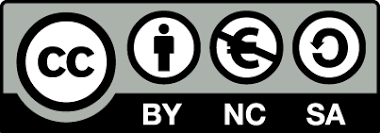Assessing the feasibility and appropriateness of using Positron Emission Tomography/Computed Tomography (PET/CT) in Thailand
| dc.contributor.author | อินทิรา ยมาภัย | en_US |
| dc.contributor.author | นัยนา ประดิษฐ์สิทธิกร | en_US |
| dc.contributor.author | ชนิสา โชติพานิช | en_US |
| dc.contributor.author | สุนันทา เชี่ยววิทย์ | en_US |
| dc.contributor.author | อรรถสิทธิ์ ศรีสุบัติ | en_US |
| dc.contributor.author | สามารถ ราชดารา | en_US |
| dc.contributor.author | สุฮวง ฐิติสัตยากร | en_US |
| dc.contributor.author | สุรศักดิ์ ปริสัญญกุล | en_US |
| dc.contributor.author | ยศ ตีระวัฒนานนท์ | en_US |
| dc.date.accessioned | 2010-02-11T06:39:08Z | en_US |
| dc.date.accessioned | 2557-04-15T08:41:31Z | |
| dc.date.available | 2010-02-11T06:39:08Z | en_US |
| dc.date.available | 2557-04-15T08:41:31Z | |
| dc.date.issued | 2552-11 | en_US |
| dc.identifier.isbn | 9786161101954 | en_US |
| dc.identifier.uri | http://hdl.handle.net/11228/2889 | en_US |
| dc.description.sponsorship | สำนักงานกองทุนสนับสนุนการสร้างเสริมสุขภาพ, สำนักงานพัฒนานโยบายสุขภาพระหว่างประเทศ,สถาบันวิจัยระบบสาธารณสุข,สำนักนโยบายและยุทธศาสตร์ กระทรวงสาธารณสุข | en_US |
| dc.format.extent | 5845011 bytes | en_US |
| dc.format.mimetype | application/pdf | en_US |
| dc.language.iso | th | en_US |
| dc.publisher | โครงการประเมินเทคโนโลยีและนโยบายด้านสุขภาพ | en_US |
| dc.rights | โครงการประเมินเทคโนโลยีและนโยบายด้านสุขภาพ | en_US |
| dc.subject | การวินิจฉัย | en_US |
| dc.subject | เทคโนโลยีทางการแพทย์ | en_US |
| dc.title | การศึกษาความเป็นไปได้และความเหมาะสมของการใช้เทคโนโลยีเพทซีทีในประเทศไทย | en_US |
| dc.title.alternative | Assessing the feasibility and appropriateness of using Positron Emission Tomography/Computed Tomography (PET/CT) in Thailand | en_US |
| dc.type | Technical Report | en_US |
| dc.description.abstractalternative | Objectives: This study aims to assess appropriate clinical indications for and cost of Positron Emission Tomography/Computed Tomography (PET/CT) under the Thai setting. It also estimates the potential need and supply of PET/CT within the next five years. Methods: a systematic review and meta-analysis of literature published in PubMed database were used to identify whether and which medical conditions that PET/CT was superior to other alternative technology. Micro-costing technique was used to estimate the unit cost and cost function of PET/CT at Siriraj hospital. Lastly, number PET/CT scanners, epidemiology of cancer in Thailand and relevant human resources were estimated to guide the future investment on PET/CT in Thailand. Results: Based on the current evidence PET/CT was superior to alternatives for diagnostic of cervical, colon, esophageal, lymphomas, malignant, non-small cell lung, ovarian and thyroid cancer. However, the superiority was only determined by a higher accuracy rate because there was a lack of evidence on the long-term implications i.e. the change of clinical practices, morbidity and mortality from the use of PET/CT compared to its alternatives. The largest cost component was the capital investment of the machine following with radiopharmaceuticals. At the current price of 60,000 Baht per scan, break-even point was at eight cases per week. It can be seen from the epidemiological profiles that the current number of PET/CT is sufficient for providing services to the Thai cancer patients indicated by proposed indications of eight cancers above. The other barrier of diffusion of PET/CT over country is the lack of human resources who have skills operating PET/CT. It can be considered that referring patients to perform PET/CT in Bangkok is more cost-effective than investing the new PET/CT centre outside Bangkok. Conclusions: A better policy for diffusion and use of PET/CT in Thailand can be formulated using the evidence generated from this study. It also illustrates a gap of knowledge that requires for future assessment of other diagnostic technology. | en_US |
| dc.subject.keyword | เทคโนโลยีเพทซีที | en_US |
| .custom.citation | อินทิรา ยมาภัย, นัยนา ประดิษฐ์สิทธิกร, ชนิสา โชติพานิช, สุนันทา เชี่ยววิทย์, อรรถสิทธิ์ ศรีสุบัติ, สามารถ ราชดารา, สุฮวง ฐิติสัตยากร, สุรศักดิ์ ปริสัญญกุล and ยศ ตีระวัฒนานนท์. "การศึกษาความเป็นไปได้และความเหมาะสมของการใช้เทคโนโลยีเพทซีทีในประเทศไทย." 2552. <a href="http://hdl.handle.net/11228/2889">http://hdl.handle.net/11228/2889</a>. | |
| .custom.total_download | 1295 | |
| .custom.downloaded_today | 0 | |
| .custom.downloaded_this_month | 1 | |
| .custom.downloaded_this_year | 1 | |
| .custom.downloaded_fiscal_year | 32 |
 | ผลงานวิชาการเหล่านี้เป็นลิขสิทธิ์ของสถาบันวิจัยระบบสาธารณสุข หากมีการนำไปใช้อ้างอิง โปรดอ้างถึงสถาบันวิจัยระบบสาธารณสุข ในฐานะเจ้าของลิขสิทธิ์ตามพระราชบัญญัติสงวนลิขสิทธิ์สำหรับการนำงานวิจัยไปใช้ประโยชน์ในเชิงพาณิชย์ |
Fulltext
This item appears in the following Collection(s)
-
โครงการประเมินเทคโนโลยีและนโยบายด้านสุขภาพ [22]
Health Intervention and Technology Assessment Program (HITAP)

